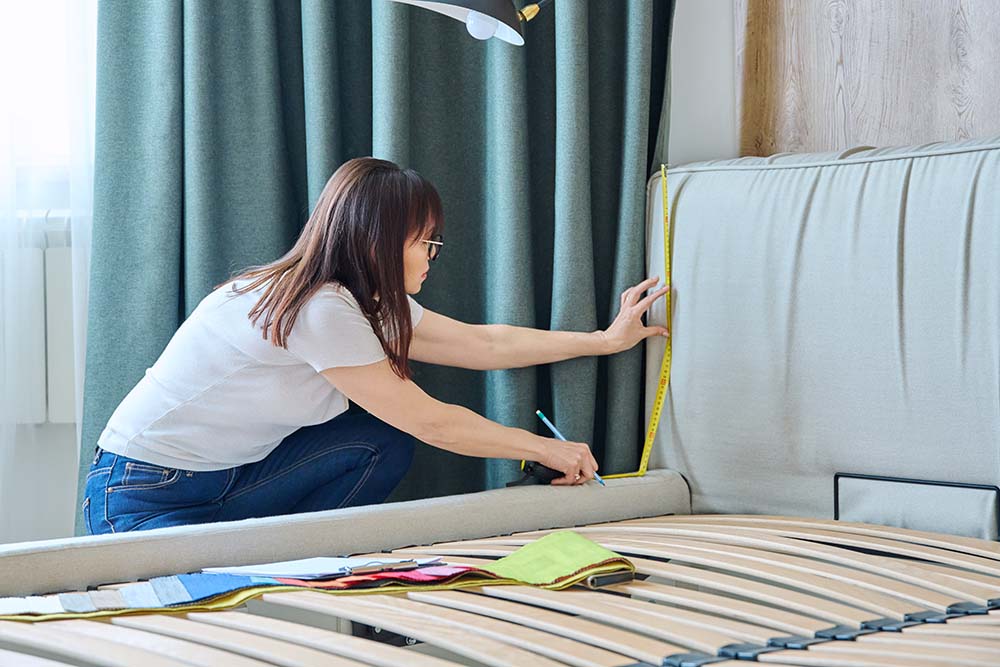In today's world, where sustainability is at the forefront of our minds, there is a growing movement to transform our homes into more eco-friendly spaces. One of the most versatile and effective ways to achieve this transformation is by harnessing the power of fabrics. Fabrics, when chosen thoughtfully, can be the key to creating a sustainable, stylish, and budget-friendly home.

The next time you embark on a home improvement project, remember the immense potential that fabrics hold to make your space not only beautiful but also environmentally responsible and cost-effective. When you craft your own textile creations or choose fabrics that resonate with your style, you create a home that reflects your unique personality and tastes.
Let’s delve into how using fabrics can help you beautify your living space while contributing to a greener and more eco-conscious world
Upcycling with Fabrics

Upcycling, the process of giving new life to old or discarded items, has gained popularity for its environmental benefits and creativity. Fabrics play a pivotal role in upcycling projects, offering endless possibilities for breathing new life into tired furniture, outdated décor, and even clothing.
Consider that old chair that has seen better days. Instead of tossing it into the landfill, why not give it a fresh look with a new fabric upholstery? Upcycling furniture with fabrics not only saves you money but also reduces waste and carbon footprint associated with producing new items. You can find vintage fabrics in thrift stores or use remnants from previous projects to minimise cost and environmental impact.
• Reviving Furniture: Beyond the rejuvenation of chairs, fabrics can work wonders on other furniture pieces as well. Give an old couch a contemporary twist with a vibrant upholstery fabric, or transform a tired wooden dresser with fabric-covered drawer fronts. These fabric-infused updates breathe life into your living space.
• Revamping Home Decor: Fabrics are versatile in revitalizing various home décor elements. Unleash your creativity by crafting unique throw pillow covers from remnants or repurposing vintage fabrics into stylish curtains. A simple table runner made from leftover fabric can infuse a room with fresh character.
• Clothing and Accessories: Don't limit your upcycling endeavours to the home. Old clothing can receive a new lease on life with fabric embellishments or patches. Consider repurposing vintage scarves or fabrics into chic handbags or headbands. The possibilities for fashion upcycling are as boundless as your imagination.
Each fabric-based upcycling project diverts items from landfills, reduces the demand for new resource-intensive products, and minimises the environmental burden associated with manufacturing.
Embracing Sustainable Materials

Sustainability is a critical consideration in modern interior design, and fabrics offer various opportunities to embrace eco-friendly materials. Many manufacturers now produce textiles using sustainable fibres like organic cotton, bamboo, hemp, and recycled materials. These materials are not only kinder to the environment but also healthier for your home, as they often come free from harmful chemicals.
• Organic cotton, for instance, is grown without the use of synthetic pesticides and fertilizers, reducing the ecological impact of cotton production. Fabrics made from organic cotton are soft, durable, and available in a wide range of colours and patterns, making them a fantastic choice for bedding, upholstery, and curtains.
• Bamboo is another sustainable fabric option that has gained popularity. Bamboo grows rapidly and requires minimal water and pesticides, making it an eco-friendly choice. Bamboo fabrics are known for their breathability, moisture-wicking properties, and natural antibacterial qualities, making them ideal for linens, towels, and even clothing.
• Hemp, with its strong and durable fibres, is an excellent choice for upholstery and drapery fabrics. Hemp cultivation typically involves fewer chemicals and less water than conventional cotton farming. It's also resistant to mould and UV light, ensuring your home textiles last longer.
Choosing fabrics made from sustainable materials not only reduces your environmental footprint but also supports ethical and responsible production practices in the textile industry.
Affordability

Transforming your home doesn't have to break the bank. Fabrics offer an affordable way to update your space without major renovations or costly purchases.
• One of the most budget-friendly options is to invest in slipcovers for furniture. Slipcovers come in various styles and fabrics, allowing you to change the look of your couch or chairs without buying new furniture.
• DIY projects using affordable fabrics can yield impressive results. Sewing your own curtains, cushion covers, or even reupholstering furniture can save a significant amount of money compared to buying ready-made items.
• Fabric remnants or discounted fabrics from local stores can be excellent choices for these projects, ensuring affordability without compromising style.